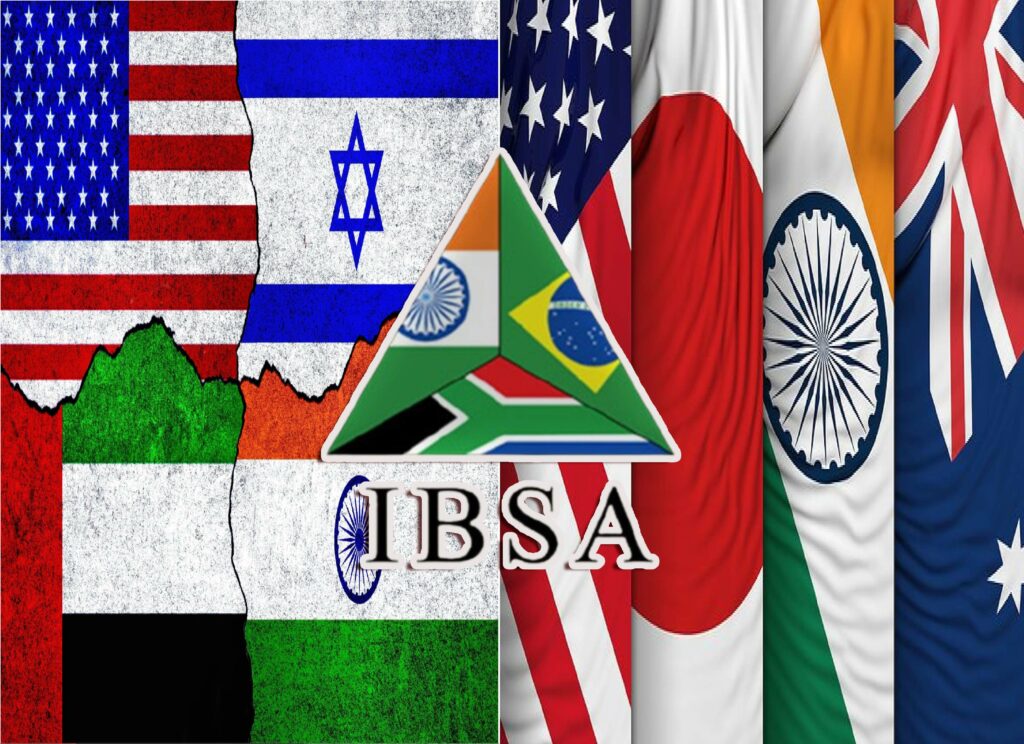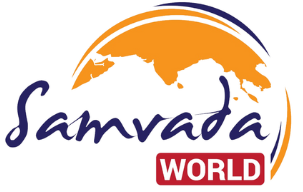
- The ever-changing global world order and the changing nature of global threats continue to pose challenges to the continued relevance of multilateral frameworks in resolving conflicts and issues.
- India follows this policy very strongly because it gives the country a high level of strategic autonomy, which it embraces in this era of multi-alignment.
- India can challenge the dominance of current international institutions and advance its vision of a multipolar world order through minilateralism.
Introduction: Understanding Minilateralism
Minilateralism, in the context of International Relations, refers to the formation of small and targeted alliances, which include only a limited number of countries. These coalitions are usually formed between nations that share common interests, goals or concerns. The formation of these groups allows for quick decision-making and more focused outcomes. Minilateral agreements are often informal, voluntary and lack permanent institutional structures. These agreements are more agile and flexible as compared to bigger groupings or multilateral agreements, which allows for quicker grievance redressal and fewer disagreements amongst nations.
The ever-changing global world order and the changing nature of global threats continue to pose challenges to the continued relevance of multilateral frameworks in resolving conflicts and issues. The lack of trust in the US global leadership, along with the rise in US-China tensions, is forcing many developing nations to look out for other global powers. Even global institutions like the World Trade Organisation (WTO) have struggled to reach an understanding on complex issues due to scattered memberships and contradictory priorities. Moreover, the aftermath of the COVID-19 outbreak has accelerated the formation of strategic and targeted minilaterals addressing a variety of concerns, including supply chain resilience.
Why Minilateralism Appeals to India
In today’s multipolar world, India focuses on minilateralism because it allows strategic partnershipfocusesing India to form targeted diplomatic and trade relationships with other nations. Moreover, these tiny groupings, as mentioned above, are more agile and adaptive than large groupings. This allows India to respond quickly to emerging challenges.
India uses these minilateral organisations to fulfil its aims of building strong coalitions and partnerships with other countries, like in the Indo-Pacific, where it wants to counter-balance the dominance of China. India, too, wants to diversify its trading partners, to avoid putting all its eggs in one basket, that is, China.
These minilateral organisations also tend to fill the gaps that have been created due to the presence of a large number of countries in multilateral agreements. Many multilateral forums are often inefficient due to disagreements between member states. Therefore, minilateralism can offer a more focused, agile, and effective approach to addressing emerging international issues.
Key Minilateral Platforms
Some important minilateral organisations that India is actively taking part in, to boost strategic ties in trade, security, and technology, are:
- QUAD
The Quadrilateral Security Dialogue is a grouping of Australia, Japan, India, and the United States. It was initiated by the then Japanese Prime Minister, Shinzo Abe, along with the support of Australian Prime Minister, John Howard, Indian Prime Minister, Manmohan Singh, and the United States Vice President, Dick Cheney.
The main motive of creating QUAD is to promote a free, open, and prosperous Indo-Pacific region. The grouping collaborates on various international issues, like security, trade, and disaster relief.
Due to the small size of its members, focused agenda, and agility in its structure, it can be classified as a minilateral organisation.
- I2U2
The I2U2 grouping consists of India, Israel, the United Arab Emirates, and the United States of America. This grouping primarily focuses on economic collaboration between these nations in sectors like food security, energy, and infrastructure. This kind of grouping creates a bridge between South Asia, West Asia and the far West. One key project that has been taken under this coalition is a hybrid renewable energy facility in Gujarat, India. This grouping’s primary focus is energy, infrastructure, and technology. It does not talk about collaboration on security, which is unlike other minilateral groupings.
- IBSA
This coalition includes India, Brazil, and South Africa. This particular dialogue remains a clear example of South-South cooperation, driven by shared democratic values and developmental goals. It gives India a chance to portray itself as a voice for the Asian Global South and put forward its needs. The three countries, being located in the Global South, share common challenges and aspirations, making IBSA cater to only these shared challenges.
The IBSA Fund was reinstated in 2007 to focus on hunger and to alleviate poverty. IBSA also hosts academic forums for knowledge exchange and collaboration. IBSA also promotes women’s empowerment by hosting women’s forums to address these issues. Therefore, IBSA comes in as a Global South cooperation among nations from different continents that share common goals and face similar challenges to work on such issues.
Table- Key Minilateral Platforms Involving India
| Minilateral Grouping | Members | Focus Areas | India’s Interest |
| QUAD | India, USA, Japan, Australia | Indo-Pacific security, tech, supply chains | Counterbalancing China, maritime influence |
| I2U2 | India. Israel, USA, UAE | Food security, clean energy, tech | West Asia outreach, economic diplomacy |
| IBSA | India, Brazil, South Africa | Development, democracy, South-South cooperation | Global South leadership |
Strategic Gains and Challenges
Due to features like quick decision-making and agility, minilateralism is popularly gaining traction in the foreign policy of many developing countries. It also has a clearer and more focused agenda on the themes of cooperation between clearer and more focused in avoiding broad agendas, which are time-consuming. It allows for similar countries to collaborate on specific issues and challenges, like maritime security in the region or supply chain resilience.
However, this lack of participation by a large number of countries can prove to be troublesome as it can sideline some important global players from the forums. It may also give out a bad signal to other countries, making them feel excluded. The rapid formation of these minilateral agreements may undermine or ignore the workings of bigger multilateral agreements, like the WTO. Multilateral forums may also promote the formation of blocs and make it difficult to achieve global agreement on issues. Certain examples like the formation of NATO and the Warsaw Pact can be cited here, which divided the world into 2 extremes- the First World countries and the Second World countries.
Minilateralism in the Indian Foreign Policy and the Way Forward
Minilateralism is becoming a very popular strategic diplomacy tool in Indian Foreign Policy. India follows this policy very strongly because it gives the country a high level of strategic autonomy, which it embraces in this era of multi-alignment. It also gives India an opportunity to collaborate with like-minded nations on very specific agendas. India also uses these platforms to voice its concern for the issues faced by the Global South. Moreover, India can also form meaningful partnerships with stakeholders in the Indo-Pacific region using these organisations to counter the increasing influence of China.
Minilateralism can help India navigate the complex dynamics of the world in the 21st century. India can more effectively handle the difficulties posed by China’s rise, the US-China rivalry, and other global power dynamics by concentrating on particular issues and forming strategic alliances. India can challenge the dominance of current international institutions and advance its vision of a multipolar world order through minilateralism.
References:
- https://asiasociety.org/australia/india-and-minilateral-cooperation-chosen-partner-or-hard-nut-crack
- https://thediplomat.com/2025/04/minilateralism-is-the-driver-of-indias-diplomatic-strategy-in-the-indo-pacific/
- https://nititantra.com/rise-of-minilateralism-in-india/
- Koga, K. (2022). A new strategic minilateralism in the Indo-Pacific. Asia Policy, 17(4), 27–34. https://doi.org/10.1353/asp.2022.0063
- https://www.lowyinstitute.org/the-interpreter/rise-endurance-minilaterals-indo-pacific
- Panda, J., & Ohn, D. (2024). Minilateralism and the new Indo-Pacific order: Theoretical ambitions and empirical realities. Australian Journal of International Affairs, 78(6), 767–781. https://doi.org/10.1080/10357718.2024.2410411
- https://www.orfonline.org/research/explaining-the-rise-of-minilaterals-in-the-indo-pacific
Archita Gaur is a postgraduate student at the School of International Studies, JNU. She specialises in the World Economy and has a strong interest in public policy, economic research, and governance. The views expressed are the author’s own.
